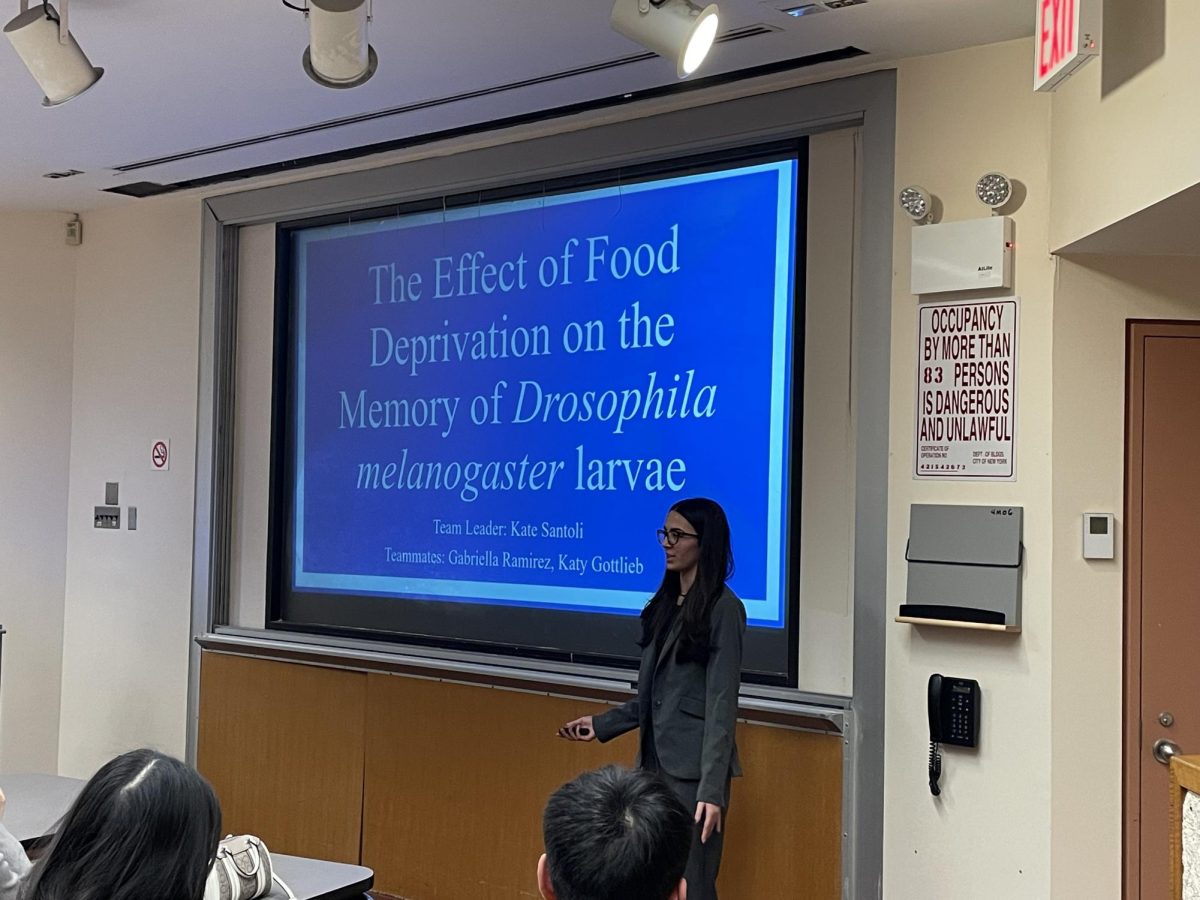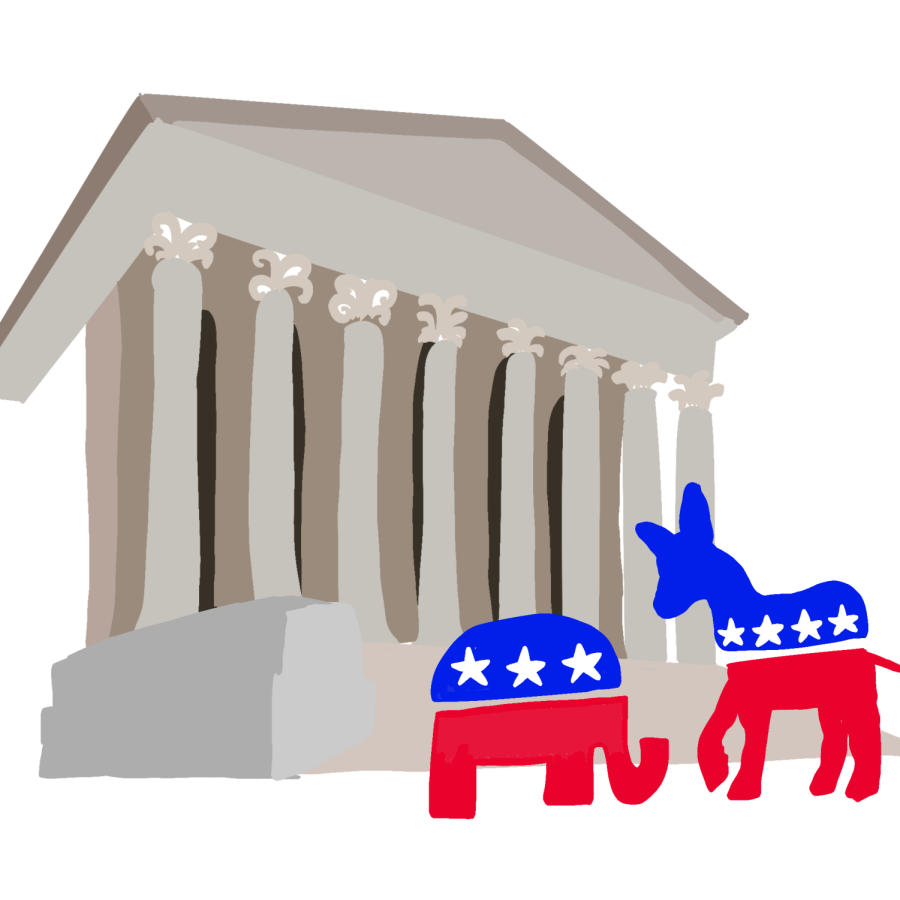The Death of an Apolitical Supreme Court
Even in the 18th century, with the dust settling from the American Revolution and the birth of the new U.S., Alexander Hamilton was able to recognize the danger of a contaminated Supreme Court: “For I agree,” he wrote in Federalist 78, “that ‘there is no liberty, if the power of judging be not separated from the legislative and executive powers.’” Over the past decade, this line has swiftly been crossed. What is at stake? The very foundation of the American government that founders, like Hamilton, devoted their lives to establish: liberty and justice.
During former President Donald Trump’s four-year term, several events brought conflict to the surface: the murder of George Floyd, the rise of the Black Lives Matter movement, the start of the COVID-19 pandemic, multiple school shootings including Parkland, debates over laws regarding transgender rights, and the impeachment trials. Political division has extended and arguably worsened into Joe Biden’s presidency, and social issues such as immigration, abortion laws, LGBTQ+ rights, voting laws, and gun regulations have polarized right- and left-leaning beliefs.
The more diametrically polar that political ideologies become, the closer the judicial branch comes to breaking its nonpartisan vow. This phenomenon – the politicization of the Supreme Court – can be seen in three sectors of the SCOTUS nomination process: the attitudes of the electorate toward nominees, the strategic maneuvering of nominees by presidents and current justices, and approval patterns by members of the Senate. The politicization and weaponization of the Supreme Court poses the utmost threat to American democracy and should be considered a dire urgency if the nation hopes to stay true to its founding principles.
Division among the conservative right and liberal left is observed most blatantly among the voters themselves. Forty-one percent of Americans feel that “Supreme Court justices nominated by Democratic presidents are more likely to make liberal rulings, and justices nominated by Republican presidents are more likely to make conservative rulings, regardless of the Constitution, the law, and the facts of the case,” according to a survey from the Annenberg Public Policy Center (www.annenbergpublicpolicycenter.org).
The last four justices to join the Supreme Court – Neil Gorsuch (‘17), Brett Kavanaugh (‘18), Amy Coney Barrett (‘20), and Ketanji Brown Jackson (‘22) – have been voted in by a margin between two and nine votes, splitting the Senate practically in half. The near fifty-fifty votes were not randomly divided; rather, they fell right between party lines – Republicans on one side, Democrats on the other. While this may have become commonplace in the time since Gorsuch was appointed in 2017, this did not used to be the case. Between 1970 and 1987, five justices were appointed to join the Supreme Court unanimously: Harry Blackmun (‘70), John Paul Stevens (‘75), Sandra Day O’Connor (‘81), Antonin Scalia (‘86), and Anthony M. Kennedy (‘87). Republicans and Democrats alike voted “yea” for these justices, despite the justices’ method of interpreting the Constitution.
Antonin Scalia, for example, was known for his more traditional views, and he labeled himself an “‘originalist’: a judge who interprets the Constitution exactly as the framers intended.” Yet, in 2020, when Barrett – a mentee of the late Scalia – called herself an “originalist,” liberal Democrats across the country immediately opposed her joining the bench. Her religious faith, specifically, and even the legal legitimacy of the adoption of two of her seven children have been attacked. Despite her stating several times that “judicial philosophies are not the same as political parties,” outrage from the left flooded social media platforms and national news outlets, claiming that Barrett would be too biased with conservative politics in her rulings. Ultimately, every single Senator who voted “yea” for Barrett to join the Supreme Court was from the Republican Party, and every single Senator who voted “nay,” save one Independent, was a Democrat.
Why, just 34 years apart, are the public portrayal and congressional response to two “originalist” justices so vastly different? Both Scalia and Barrett were nominated by Republican presidents, Ronald Reagan and Donald Trump; and, as mentor and mentee, the two shared very similar methods of interpreting the Constitution. The only plausible explanation is that the American people and government have become so entrenched in partisan division that even the Supreme Court, an inherently nonpartisan institution, is no longer insulated from politics.
Further proof of this shift can be found in alignment between the presidents and the justices they nominated. Throughout the 20th century, numerous presidents nominated justices to the Court whose views contrasted with their own: President George H.W. Bush and Justice David Souter; President Theodore Roosevelt and Justice Oliver Wendell Holmes Jr.; President Dwight D. Eisenhower and Chief Justice Earl Warren; President Harry Truman and Justice Tom C. Clark; President Reagan and Justices Sandra Day O’Connor and Anthony M. Kennedy.
Today, presidents ensure their appointees’ alignment with their political views before even considering their nomination. In 2016, on the campaign trail prior to the first year of his presidential term, Trump went on record to say, “I’m not appointing a liberal judge.” Vice President Mike Pence then told lawmakers, “I can already tip you off: President Trump’s going to keep his promise to the American people, and he’s going to nominate a strict constructionist to the Supreme Court.” Even before the Trump Administration reviewed candidates for a SCOTUS nomination, they had one singular goal in mind: to appoint someone who would satisfy their political party’s agenda.
Biden, on the campaign trail in June 2020, pledged to nominate the first Black woman to the Supreme Court. Despite the positive historical impact of diversifying the Court, Biden put its nonpartisanship at risk by appointing a justice on the basis of her race and gender, not considering every possible candidate with a blind eye to physical characteristics. This could also be seen as a power play to leverage the Democratic party’s lean towards diversity in recent years and gain support for presidential reelection. The Court being used as a political power play means it is no longer an independent entity with the sole purpose of interpreting the law, and it, thus, cannot authentically deliver justice.
It can be argued that even Justice Stephen Bryer, a moderate judge who has always been vocal in his staunch support of a nonpartisan court, has fallen victim to this cultural phenomenon: hyper-politicization. His retirement in 2022 came after years of desperate pleas from members of the Democratic Party who wished to see a Supreme Court vacancy during Biden’s presidency, in order to secure a new “liberal justice.” Trump’s nomination of three justices skewed the ideological balance of the Court to be viewed as more “conservative,” and Democrats worried that if Breyer did not retire now, Biden may have missed his chance to swing the Court left. These worries were amplified because Justice Ruth Bader Ginsburg refused to retire during Obama’s presidency in order to secure another liberal seat on the bench. Breyer, however, was not as true to his philosophy, retiring to satisfy the Democratic Party’s wishes.
Supreme Court justices are, for good reason, held to a different standard than their peers from the executive and legislative branches. They are the only members of the U.S. government to be granted a lifelong appointment. The length and permanence of their duty, alone, is enough to set them apart as the most powerful shapers of the American past, present, and future. Supreme Court cases are famous for their establishment of precedence, deciding the rule of both the original case at hand and all legal cases regarding the constitutional issue going forward. SCOTUS decisions changed the nation in innumerable ways, and their precedence remains in effect so long as the Constitution stands.
In Federalist 51, Hamilton states it is “essential to the preservation of liberty that each department should have a will of its own” and “that the members of each should have as little agency as possible in the appointment of the members of the others.” This foresight, delivered from over two centuries ago, must be adhered to with the strictest gravity if America hopes to stay true to its original intentions and maintain the liberty it has had as its primary objective since its conception.

I am the editor-in-chief of the Horizon newspaper and a member of the Class of 2022. I am also the captain of the LHS Speech, Debate, and Model Congress...










































